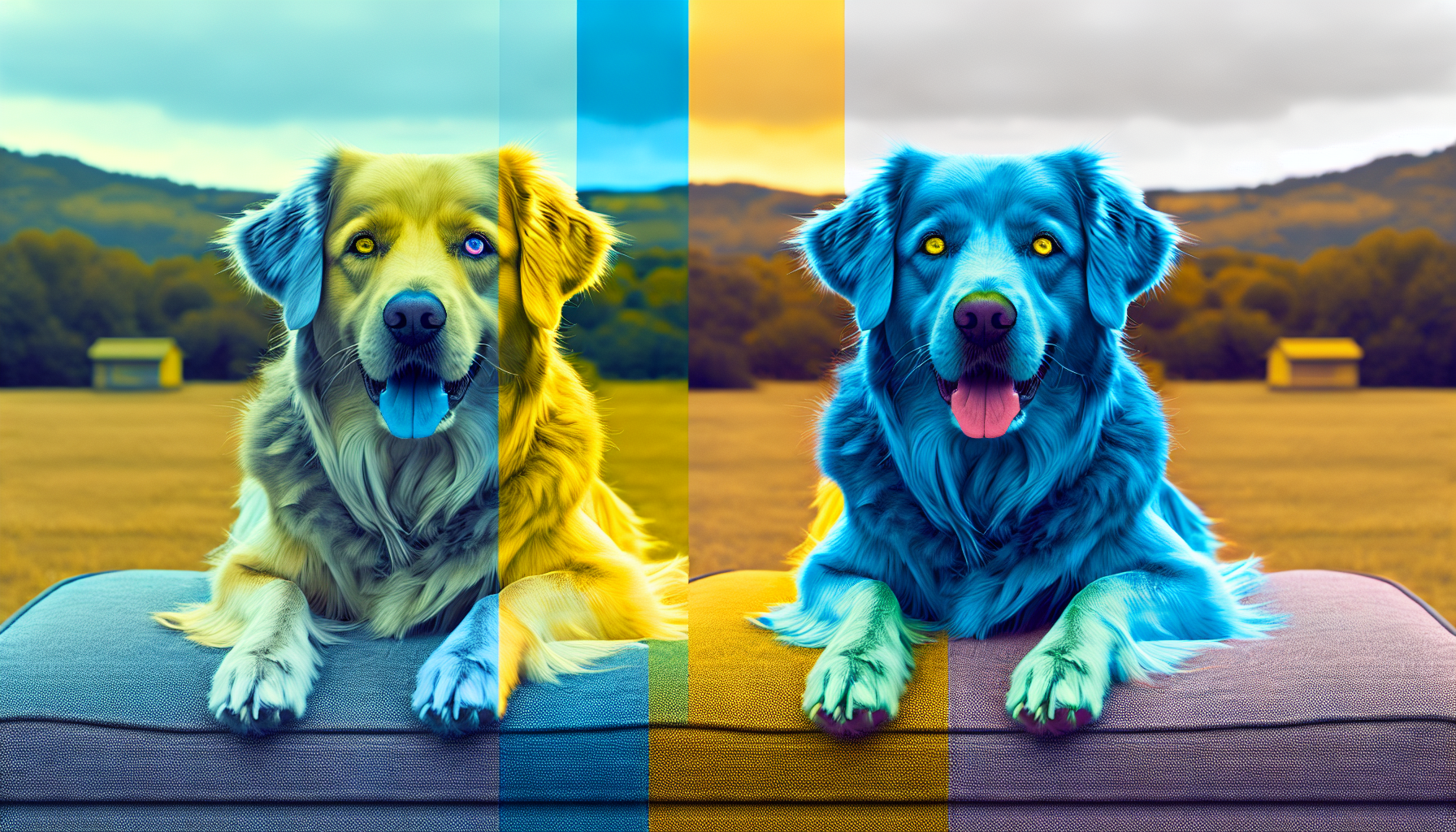Understanding Canine Vision: What Colors Can Dogs See?
Have you ever wondered how the world looks through your dog’s eyes? While our furry friends share our home and lives, their perception of the world is markedly different from ours, particularly when it comes to color vision. In this post, we’ll delve into the fascinating topic of canine vision and discuss what colors dogs can see, how it compares to human vision, and what that means for our interactions with them.
The Science of Dog Vision
Dogs, like many animals, have a different visual system than humans. While humans are trichromatic, meaning we have three types of color receptors (cones) in our eyes sensitive to red, green, and blue, dogs are dichromatic. This means dogs possess only two types of cones, primarily sensitive to blue and yellow wavelengths. As a result, they perceive a more limited color palette than we do.
What Colors Can Dogs See?
To put it simply, dogs are most sensitive to shades of blue and yellow. Here’s a breakdown of how different colors appear to dogs:
- Blue: Dogs see blue very well, and it appears bright and vivid to them.
- Yellow: Similar to blue, yellow is easily detectable and also appears bright.
- Green: Green is a color that dogs struggle to discern, appearing more like a gray or brown.
- Red: Reds may appear dark or indistinguishable from black, as they fall outside the spectrum that dogs can easily see.
To illustrate this, here’s a visual representation of how dogs see colors compared to humans:

The Evolutionary Perspective
The evolution of canine vision can be traced back to their ancestors. Dogs are descendants of wolves, which are primarily nocturnal hunters. The adaptation of their eyes to see better in low light conditions was vital for survival. This adaptation means that while they may see fewer colors, they excel in perceiving movement and detecting motion in dim light.
How Color Perception Affects Behavior
Understanding how dogs perceive color can significantly impact how we train and interact with them. For instance, when using colorful toys, opting for blue or yellow items can help ensure that your dog can see and engage with them effectively. Many dog toys are designed with this in mind, taking into account the color spectrum visible to dogs.
Training and Rewards
When training dogs, using colors they can see well can enhance their learning experience. For example, if you reward your dog with a blue or yellow toy after a successful command, they are more likely to associate that color with positive reinforcement. Similarly, using colored markers or treats in these hues can help during training sessions.
Conclusion: Embracing Your Dog’s Unique Vision
In conclusion, while our dogs may not see the vibrant spectrum of colors that we do, their vision is perfectly adapted to their needs. Understanding that they primarily see shades of blue and yellow can help us connect with them better. Whether it’s choosing the right toys, training tools, or simply appreciating the unique way our dogs perceive the world, embracing their vision allows us to foster a deeper bond with our furry friends.
So, the next time you’re out shopping for your canine companion, remember to consider their unique visual capabilities. After all, their experience of the world is just as rich and fulfilling, even if it’s painted in a different palette!